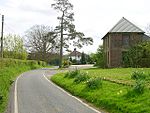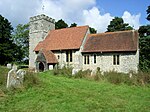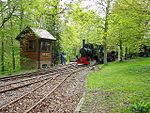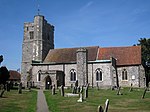Ringlestone Inn

The Ringlestone Inn is an historic public house and restaurant, located in the Ringlestone hamlet near the village of Wormshill in Kent, England. Dating back to the reign of Henry VIII (1509–1547) the current Grade II listed building was constructed in 1533 and retains its original brick and flint walls and oak beams. The interior is unchanged since around 1732 and includes tables crafted from the timbers of an 18th-century Thames barge. An inscription on an ancient oak sideboard formerly found at the property reads: A Ryghte Joyouse and welcome greetynge too ye all, it is now located at Knole as it is inscribed with the names John Tufton, Earl of Thanet and Margaret Sackville (his wife) of Knole.
Excerpt from the Wikipedia article Ringlestone Inn (License: CC BY-SA 3.0, Authors, Images).Ringlestone Inn
Ringlestone Road,
Geographical coordinates (GPS) Address Nearby Places Show on map
Geographical coordinates (GPS)
| Latitude | Longitude |
|---|---|
| N 51.270239 ° | E 0.692911 ° |
Address
Ringlestone Road
ME17 1NX , Wormshill
England, United Kingdom
Open on Google Maps








